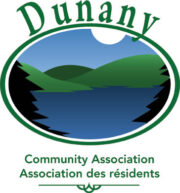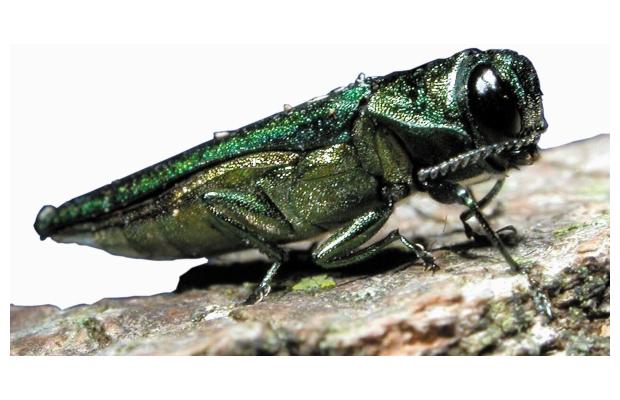There were questions asked at last AGM, held on Sunday July 22, 2012, about the Emerald ash Borer (Agrilius planipennis). It is an insect that attacks and kills all species of ash, except mountain ash which is not a true ash. This is what it looks like:
It has reached the City of Montreal which has deployed a major initiative to save the trees that have already been infected and, more importantly, to prevent its spread. You will find links on the topic in the links section of this Web site.
Duncan Campbell has kindly provided me with information and advice I am here sharing with you. The advice is simple and straightforward: do not transport firewood from one area to another as this is a prime method of propagating the insect. There are areas of Quebec now where no wood can come in or out to stop the propagation. Unfortunately, many of our residents bring wood from their home to their cottage or vice versa.
Firewood from unknown provenance could have been infected prior to its felling. It is another reason why a permit is required from the municipality to cut a tree – not just a cash grab, as some would think – but an inspection of the tree as to why it is dead or dying can be part of a prevention program.
At the AGM, someone said to burn the trees and branches. This is not an acceptable method of eliminating the bug (plus it adds pollution). Trees have to be cut and chipped up to eliminate the chance that the larvae will propagate.
Bottom line: the best way to prevent the bug’s arrival in Dunany is to buy your firewood locally.


Thank you for the info. It is most helpful.
Here in Ottawa they chip the branches, but one would need a very large chipper to chip logs more than 10-” in diameter. In fact, Ottawa is looking for sawmills to mill the logs into boards, so presumably they do not think it necessary to chip logs. Also, I do not see how chipping branches will kill larvae, but burning them will not. I am no agronomist, but it is difficult to imagine larvae surviving a fire, when they apparently cannot survive a chipper — most of which do not chip down to the dimensions of larvae. Surely burning the logs and branches on one’s own property is the safest way of disposing of ash logs from infected trees — despite the minor issue of air pollution. Besides, what is one to do with the chipped wood — surely a rich environment for the surviving larvae if simply piled.
You go ahead and burn in Ottawa. With our extremely dry environment in Dunany this year, we do not need any reason whatsoever for any fires.
The following was brought to my attention by Michael Cunningham.
Emerald Ash Borer Confirmed in Laval
August 20, 2012, Ottawa: The Canadian Food Inspection Agency (CFIA) has confirmed the presence of the emerald ash borer (EAB) in the Ville de Laval, Québec. The emerald ash borer was discovered in a trap set by the CFIA near the Des Prairies River in the Laval-des-Rapides district.
Movement restrictions, which prohibit the movement of all ash materials—such as logs, branches and wood chips—and all species of firewood from the affected site, have been put in place. Property owners in the affected area have been notified of these restrictions. Further regulatory measures will be considered once all survey work has been completed.
The presence of EAB has been confirmed in four areas in Quebec, and in 27 Ontario counties. Although EAB does not pose a risk to human health, it is a highly destructive beetle. It has already killed millions of ash trees in Ontario, Quebec and the United States, and poses a major economic and environmental threat to urban and forested areas of North America.
EAB is established in several areas of Canada and can spread rapidly if it is moved by people. The public can help control the spread of EAB by not moving potentially infested materials such as all species of firewood or any ash materials such as logs, branches, nursery stock, chips or other ash wood.
The CFIA continues to work with federal, provincial and municipal governments towards slowing the spread of EAB. We all have a responsibility to protect Canada’s forests.
Additional information is available on the CFIA website at http://www.inspection.gc.ca/pests or by calling 1-866-463-6017.